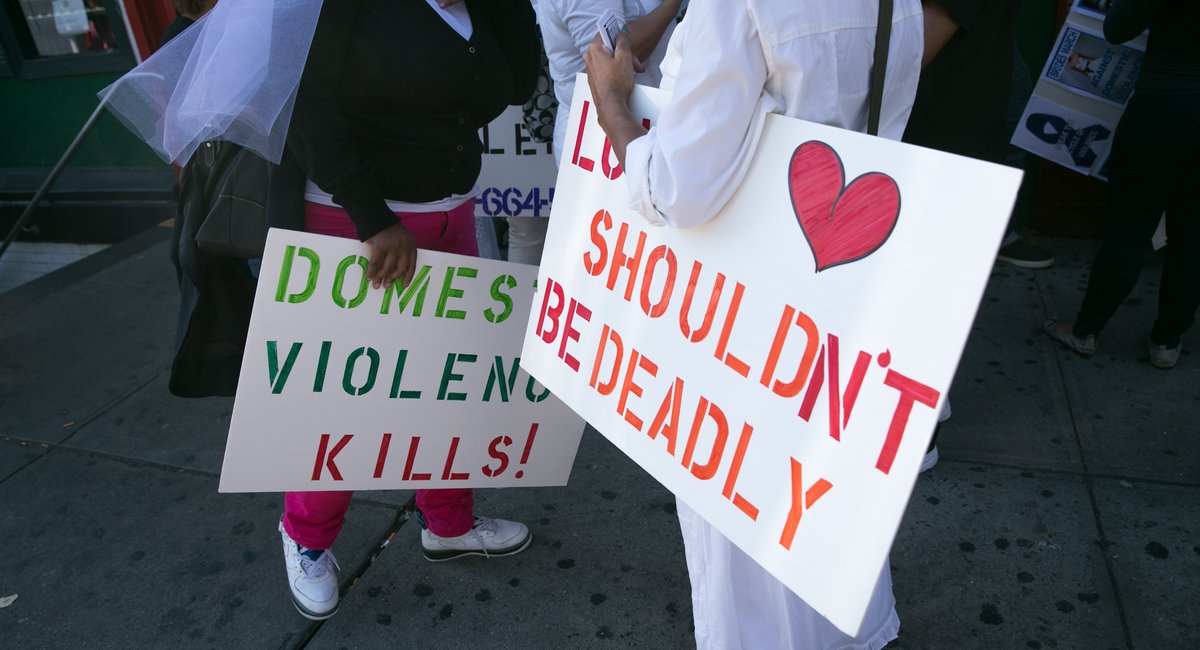Domestic violence survivors fleeing their abusers are increasingly bouncing between city shelters with dwindling chances of finding permanent housing, a new report highlights.
New Destiny Housing released a report on Thursday that found 18% fewer families left domestic violence shelters for permanent homes between 2018 and 2023. Last year, about half the 2,200 families who left emergency shelters for domestic violence survivors ended up in another shelter in the city’s system. Meanwhile, just about 200 families — accounting for 9% of the shelter population — found permanent homes.
“They’re fleeing abuse and there’s nowhere to go because we’re in a housing crisis in the city so they end up in shelter and then they’re time-limited out of shelter and rather going into housing after 180 days, they’re being moved to another shelter and in some cases a third and fourth shelter before they’re able to find housing,” said Nicole Branca, executive director of New Destiny, a nonprofit that serves homeless domestic violence survivors. “That of course means that they’re being retraumatized every time but they’re also moving their kids.”
New York City’s shelter population is at record highs, driven largely by the arrival of new migrants. But even as shelter stays are at their shortest lengths in a decade and the city makes greater efforts to house homeless people, advocates for domestic violence victims say survivors and their children are getting lost in the shuffle and languishing in shelters for far too long.
The city runs several municipal shelter systems for different populations, including about 3,000 beds for domestic violence victims run by the Human Resources Administration. While it’s the largest sheltering system of its kind in the country, state law limits survivors to a six-month stay.
Families with children who still have nowhere to go after their six-month stay can reapply for shelter placement at the city’s main intake center in the Bronx. Those homeless shelters are run by the Department of Homeless Services, which is under the Human Resources Administration.
Branca said the city used to move domestic violence survivors from one shelter system to another without requiring them to reapply in the Bronx, but that practice stopped in 2022, according to the report. That means families have to prove their eligibility and “tell everybody their story all over again, proving their homelessness, proving the violence,” Branca said.
The report said last fiscal year, about 1 in 5 families with children in DHS shelters cited domestic violence as the reason they needed shelter, while about 11% attributed their homelessness to an eviction. Domestic violence has been the top reason why families with children have needed shelter since at least 2017, according to stats from the report, but in the last two years, the migrant crisis has become the overwhelming reason why families have sought shelter.
Nearly 11,000 people sought beds in the city’s domestic violence shelter system last year, slightly up from the year prior, the report said. Almost all heads of households seeking shelter were women and most were Black or Hispanic, 2022 data shows. Most people in domestic violence shelters are also children; in 2022, more than a quarter were children under 5 and slightly less than two-thirds were kids under 18.
Michelle Bennett, 44, spent three years between four shelters after fleeing her abuser with her young son.
“It was hard,” she said. “There’s no kind of stability and whatnot in their life while growing up.”
She said it was terrifying, too, after she saw her abuser outside one of the DHS shelters twice.
“People also were telling me that I should also transfer [my son] to a school close to where I was and to me, that didn’t make no sense, because every time I move, I keep transferring him. Then what good would that do for him? His grades will not be good. He wouldn’t be able to focus properly in school,” Bennett said.
Once domestic violence survivors enter the general Department of Homeless Services shelter population, getting out is even more difficult, the report said. Branca said there are almost no affordable housing options set aside specifically for domestic violence survivors. Apartments the Department of Housing Preservation and Development funds for shelter residents are hard to access for survivors. The Adams administration pledged to even the playing field this spring and launch a pilot program to help 100 domestic violence survivors in shelters find permanent housing.
The Adams administration also said it would change the eligibility requirements so domestic violence survivors could more easily qualify for city-funded supportive housing sites but details of those new rules haven’t been released.
The Human Resources Administration didn’t respond to a request for comment.
Domestic violence survivors in shelters are “hidden from view: politically, policywise, and literally with their anonymity,” Branca said. “The city could be a lot more proactive in helping to house these families and helping to keep the DHS shelter system more manageable, while also helping to not retraumatize these families.”
With New Destiny’s help, Bennett managed to find her own apartment. She said the first time her son walked into the unit, he didn’t want to leave. His favorite part is the view of the water.
“That wonderful view. That is the first thing he does when he gets up in the morning,” Bennett said.
